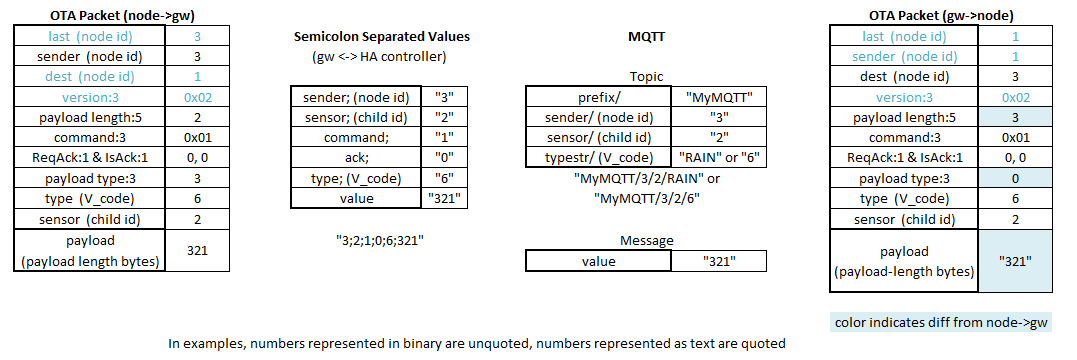OK, here's some background, for some eventual Wiki article or such.
So there are 4 main ways to get a program into the uC:
- In System Programming (ISP) - uses SPI pins + reset, can program entire flash as well as fuses. This is how we get bootloaders into protected section of Flash. (There are also parallel programmers, and sometimes even additional methods like DebugWire or JTAG).
Using these methods is more cumbersome, so the Arduino folks chose to use "bootloaders" - a small program programmed (via ISP) into a protected section of on-chip Flash, and which can in turn communicate with the outside world and write (program) a compiled sketch into the rest of on-chip flash. The bootloaders are invoked by rebooting (or upon powerup) the uC.
-
Serial bootloader using Arduino bootloader protocol (subset of Atmel's STK500 protocol). A program in a protected section of uC onboard flash that can write compiled sketches into the rest of flash. Optiboot is the name of a particular serial bootloader used in many ATMega328p Arduino derivatives. (Not always used in APM (Arduino Pro Micros) but can be).
-
MysBootloader - similar to the serial bootloader, is a small program in a protected section of on-chip flash which can write compiled sketches into the rest of the flash, but it gets the data to write from special Over The Air (OTA) bootloader packets rather than via the serial port.
-
DualOptiboot - this is another OTA bootloader, but the idea is that you write the new compiled sketch (in binary) into an external flash chip, and then only after you have received and validated the entire new binary do you reboot and let the bootloader copy from external flash to on-chip flash. Called DualOptiboot because it's derived from OptiBoot and still supports serial bootloading as well.
With the bootloaders, once they begin to program the rest of flash, they wipe out the old compiled sketch - the chip can't in general boot into a sketch again until all of the new sketch has been successfully programmed. With a serial bootloader, this is usually pretty straightforward and reliable. But flashing a page at a time via an OTA bootloader like MysBootloader is a little more dicey in that it's easy to miss packets and leave the chip in a "broken" state - with no workable sketch, only the OTA bootloader. The DualOptiboot approach is perhaps in some ways a little safer, in that the current sketch in on-chip flash is not overwritten until there is a validated copy of the new code in an external flash; then copying from external to internal flash by DualOptiboot is again pretty reliable and fast. Also, if all else fails, you can still open up the node and user serial bootloading. However, DualOptiboot only works when you have an appropriate off-chip flash memory connected, which limits your hardware.
I believe that at this time, MysBootloader only works with the nRF24L01+. It basically needs a subset of the nRF's library in the bootloader section (which grows the bootloader from 1/2 KiB to 2KiB I think). Porting it to use the RFM69 would involve using a subset of the RFM69 library in the bootloader, and had not yet been done when this was written.
If OTA bootloading fails, you can try again (you may need to power cycle the node). You can reduce the distance between source and destination. You can open the node and fall back to normal serial bootloading (at least with DualOptiboot, maybe with future versions of MysBootloader). And of course there is the fallback of using ISP (assuming the PCB doesn't do something to the reset & SPI lines that breaks that option).
Since MysBootloader keeps requesting replacements for missing or corrupted OTA bootloading packets, it usually won't fail unless the node is really out of range or there is terrible interference.
Tekka points out below a different failure mode - suppose the bootloading was successful, but the sketch itself is faulty (bugs). A serial bootloader like OptiBoot takes control upon reset (which in modern Arduinos can usually be triggered via the serial connection using an additional wire), and goes into bootloading mode if it receives proper data on the serial port - or if not, starts the currently loaded sketch. This may also happen on power up. For an OTA bootloader there's no additional wire to trigger reset on the target uC. Tekka says that MysBootloader can recover and load another sketch OTA while for some bugs in a sketch, DualOptiboot cannot recover (without a manual reset).

